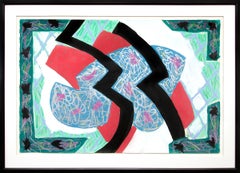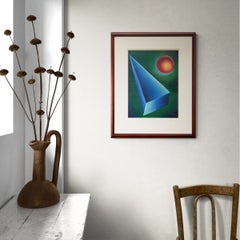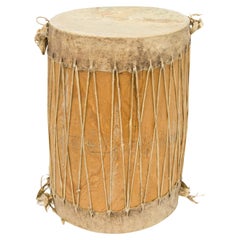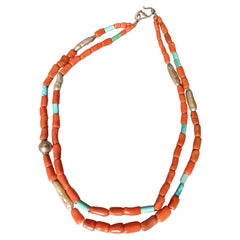David Cook Galleries
Color: Blue
Blue On Blue #1 (Abstract Painting on Shaped 3 Dimensional Canvas, Circles)
By Angelo Di Benedetto
Located in Denver, CO
Blue On Blue #1, original vintage 1965 abstract painting by Denver artist, Angelo Di Benedetto (1913-1992). Acrylic paint in shades of blue on shaped 3 dimensional (3D) canvas with a circular form protruding from the center of square painting. Presented in a vintage/original frame, outer dimensions measure 26 ¾ x 26 ½ x 1 ¼ inches. Image size is 26 x 26 x 3 ¼ inches.
Exhibited: Whitney Museum of American Art, 1965 Annual Exhibition of Contemporary American Painting December 8, 1965 to January 30, 1966
The son of Italian immigrants from the Salerno province in southern Italy, as a teenager Di Benedetto worked as a truck driver in the mornings and a bartender in the afternoons to study at the Cooper Union Art School in New York City (1930-34) from which he graduated with a certificate in freehand drawing. He won a scholarship to the Boston Museum Art School where he studied for three years, beginning in 1934, with Russian émigré painter, Alexandre Jacovleff, a member of Mir Isskustva (World of Art) in St. Petersburg before the Russian Revolution. In 1936 he painted a religious mural for St. Michael’s Grove in Paterson, New Jersey. The following year, he entered his first juried exhibition at the Montclair Museum in New Jersey, winning first prize and first honorable mention.
In December 1938, the Royal Netherlands Steamship Line sent him on a two-month ethnological study trip to Haiti, his first exposure to a different environment outside the United States. During what turned out to be an extended six-month stay, he studied and painted the life and religious customs of the island, resulting in a series of colorful, stylized paintings inspired by his immersion in the local culture. He also did scenes of Port-au-Prince and executed commissions received from prominent people in Haiti, including government officials. In 1940, his Haitian paintings were exhibited at the Montross Gallery in New York (his first solo show) and also reproduced in the January 1940 issue of Life Magazine. One of his Haitian paintings, Morning in Port-au-Prince, was owned by an American author, politician and U.S. ambassador, Clare Boothe Luce, while another image, Haiti Post Office, was acquired for the Encyclopedia Britannica Collection and later donated to Fisk University in Nashville, Tennessee.
Before World War II, Di Benedetto traveled extensively around the United States in his car and trailer doing regional paintings. In 1941, he did what is considered the first authentic version of George Washington Crossing the Delaware, a contrast to the well-known painting on the same subject (1851) by German-born painter, Emanuel Gottlieb Leutze. During the war, Di Benedetto volunteered for a secret mission to Africa in 1941 before the Allied invasion, serving as director of camouflage, foreman of native laborers, and an interpreter while based in Eritrea. The following year he received a direct commission as a Second Lieutenant in the U.S. Army Air Corps in the First Photo Mapping Squadron, leading groups as a guide and interpreter and doing ground control. During his free time in Africa, he sketched and painted the local population and his fellow servicemen.
Following Africa, he served as an orientation officer and aerial photographic officer for the 311th Photo Wing at Bolling Field, in the District of Columbia where he did a series of illustrated articles describing the natives in the different countries where the men of his organization were stationed during the war. In 1945 he was assigned to a mapping unit at Buckley Air Field in Denver where he served until his discharge in 1946. Like many other servicemen stationed at the time in Colorado, Di Benedetto chose to remain in Colorado, impressed by the state’s physical grandeur and healthful climate. After the war, he lived briefly for about a year in Rangely, a small town in northwest Colorado where he traveled and sketched. But finding it a little too remote, he settled in the old mining town of Central City in 1947, his home base for the rest of his life. He spent his first six years there transforming the old Sauder-McShane Mercantile warehouse into a giant art studio. His initial acquaintance with the town’s mining town history in 1947 resulted in a drawing, Death of a Miner, showing a male figure buried under a pile of collapsed rock in a mining tunnel.
In 1949 Di Benedetto and his wife, ceramist Lee Porzio, opened the Benpro Art School in his studio where he conducted summer art classes. The following year he teamed up with a Denver-based artist, Frank Vavra, to open the Denver Art Center at 924 Broadway. He and Vavra were founding members of the 15 Colorado Artists who seceded in 1948 from the Denver Artists Guild because they were dissatisfied with the older organization’s underlying conservatism and the disdain of some of its members for modern art. Welcoming anyone wanting to learn how to draw or paint, the Denver Art Center in downtown Denver only lasted about a year.
Undeterred by its lack of success, Di Benedetto continued throughout his career to give workshops, classes, and lectures on art-related topics in Denver and elsewhere. Examples of topics ranged from subjects such as “African Art,” Chappell House, Denver (1945) and “University or Artistic Thought” sponsored by the Art for World Friendship Committee (1954). He also taught locally at the Jewish Community Center, Steele Community Center, International House, Southern Colorado State College-Pueblo, and lectured at the University of Denver. Beginning in 1969 he sponsored over one hundred youths at his studio in Central City to spend a summer learning about art. He also conducted classes for serious working artists. His efforts earned him an honorary doctorate from the University of Colorado in 1977.
He likewise promoted contemporary Colorado artists’ work in the 1950s, heading a committee that presented one-person exhibitions in a small gallery at the Vogue Art Cinema on South Pearl Street in Denver. His interest in promoting the arts led to his participation in numerous organizations. In the 1960s he became concerned with environmental and urban art and was the president of Art for the Cities, a Denver-based nonprofit organization. He also was the chairman of and a participant in the first annual environmental art exhibit held at Denver’s American Medical Center. In 1968 Colorado Governor John Love appointed him to the Colorado Council on the Arts and Humanities in which he remained active until 1975. He served for two consecutive years as program coordinator for the Governor’s Conference on the Arts and Humanities. At the 1969 conference, Governor Love presented him an award for his contribution to the art and artists of Colorado.
At the same time, he actively participated in the civic life of Central City. The town’s Police Magistrate (1955-56), he twice campaigned for mayor, first in 1966 and again in 1973, and ran for commissioner in 1979. He socialized with artists Ben Shahn, Herbert Bayer and Mark Rothko, as well as theatrical stars appearing at the Central City Opera House, including Helen Hayes, Mae West, and Gypsy Rose Lee. He invited them to carve their autographs on his kitchen table.
Di Benedetto worked with equal facility in a variety of media: acrylic, oil paint, watercolor, charcoal, Conte crayon, graphic arts and metal (copper, iron). Up until the early 1950s, his output was dominated by representational figure work and expressionist Colorado landscapes that were not always immune from controversy. When Life Magazine included a reproduction of his Regionalist painting, Lovers in the Cornfield (1941) in its article, “Ten Years of American Art: Life Reviews the Record of a Lively, Important Decade” (November 26, 1946, issue), three counties in Massachusetts banned the publication. Just as immediately, the painting was exhibited in Denver. He said that he liked the West because the people, despite their lack of exposure to art, were individualistic and almost “anarchistic.”
In the early 1950s he did woodcuts in a modernist style, including Remembrance, showing his two young daughters. Influenced by Abstract Expressionism at that time, he began considering the elimination of the image from his work. By the end of the decade, he had decided that “the circle – pure and simple was one of the most familiar symbols of mankind and that it metaphored into everything.” At the same time, he noted that “99% of the abstract painters shied away from using…[the circle]. When they didn’t, they slaughtered it, murdered it and buried it. So it became my motif.”
For more than three decades he explored the circle in paint, sculpture and shaped canvas. Two examples of the last-named medium are his Red CQ and Black C-1, both from 1969. Because abstraction touched upon his deep feelings and spirituality, he felt he could make visible that part of life which “we feel but almost never see.” His fascination with the circle also relates to his belief that to affect the dialogue existing between object and maker, the artist must “create archetypal shapes [that have universal appeal], not symbols…to reflect simply the intrinsic beauty of the shape itself.”
A strong advocate for public art, Di Benedetto headed Art for the Cities, Inc., which sponsored nine sculptures for Burns Park as part of the Denver Sculpture Symposium held in the Mile High City in 1968. The catalysts for the idea of the sculptures were Beverly and Bernie Rosen, who had been instrumental in the creation of the contemporary department at the Denver Art Museum. Along with Di Benedetto, the other participating sculptors were Dean Fleming, Peter Forakis, Roger Kotoske, Tony Magar, Robert Mangold, Robert Morris, Richard Van Buren and Bill Verhelst. The park project eventually served as a prototype for twenty-two states, bringing the sculpture to urban spaces. The sculptures reflected Di Benedetto’s concept of “burden-less environmental art” with no hidden meaning for the public to decipher. His goal in public art was to “create a work which, when integrated with the site, will create a tranquil oasis, a counterbalance to the modern chaotic world we experience daily.”
During the 1960s and 1970s, he received other major sculpture commissions: an 80-foot-long copper wall, Jewish Community Center, Denver (1962); sculpture garden, General Rose Hospital, Denver (1964); Fountain, First National Bank of Dallas (1966); Colorado Fuel & Iron Company, Pueblo, Colorado (1969); neighborhood park sculpture, Yonkers, New York (1971); High School Park, Northglenn, Colorado (1974); ice skating rink sculpture, Pueblo (1976).
Fate was not as kind to his mural which the Colorado Supreme Court justices commissioned him to paint in 1976 for the Colorado Judicial Building from a field of twenty-two candidates. With his former student, Phyllis Montrose as his principal assistant along with three others, he spent a year and a half executing the mural. Entitled Justice Through the Ages (aka Lawgivers), it depicted sixty individuals from ancient Babylon...
Category
1960s Abstract Abstract Paintings
Materials
Canvas, Acrylic
Faulkner in Fresno, 1980s Abstract Oil and Pastel Painting, Pink Black Green
By Sidney Guberman
Located in Denver, CO
'Faulkner in Fresno', vintage 1986 original abstract painting by Sidney Guberman (b. 1936). Painted in shades of red, pale green, black, blue, purple, teal & white. Signed, dated a...
Category
1980s Abstract Mixed Media
Materials
Oil Pastel, Oil, Archival Paper, Graphite
Basic Form Problems, 1940s Framed Geometric Oil Painting, Green Blue Orange
By Ralph Anderson
Located in Denver, CO
Original abstract vintage circa 1940s Transcendental abstract oil painting by New Mexico artist, Ralph Anderson. Presented in a custom hardwood frame with all archival materials. Ou...
Category
1940s Abstract Abstract Paintings
Materials
Oil
Original Large Painting, Native American Ledger Drawing Style by Randy Lee White
Located in Denver, CO
Original painting by Randy Lee White Native American Indian ledger style in acrylic on canvas with assemblage including feather and wood. Wrapped canva...
Category
20th Century American Native American Paintings
Materials
Acrylic
Related Items
Native American Pueblo Pictorial Drum
By Native American Art
Located in Coeur d'Alene, ID
Native American Pueblo Indian pictorial drum of cottonwood log with rawhide. One side having horse and rider hunting buffalo with teepees in the background. The reverse with a Native...
Category
Mid-20th Century American Native American Native American Objects
Materials
Hide, Wood
Large Vintage Native American South West style Coral turquoise Necklace
Located in London, GB
Large Vintage Native American South West style Coral turquoise Necklace
A double string of Large high quality natural red coral beads with turquoise and natural elongated pearls
Vint...
Category
Vintage 1970s American Native American Objects
Materials
Coral
Free Shipping
H 18.9 in W 0.24 in D 0.4 in
Large Signed Native American Hopi Original Mudhead Kachina Katsina Doll on Stand
By Native American Art
Located in Studio City, CA
A wonderfully handcrafted/detailed and decorated Native American Hopi Mudhead Kachina doll. Quite an unusually large work. A striking piece overall. Hand painted with leather and possibly turquoise (necklace) accompaniment.
Hopi katsina figures, also known as kachina dolls, are figures carved, typically from cottonwood root by the Hopi people. Initially, kachina dolls were made to instruct young girls and new brides about katsinas or katsinam, the immortal beings that bring rain, control other aspects of the natural world and society, and act as messengers between humans and the spirit world. The Mudhead or Koyemsi figure is viewed as a clown/joker figure who is responsible for laughter and entertainment at Hopi dances and ceremonial events. He plays drums and games to keep his audience engaged.
The piece is signed by the artist under the base.
From an extensive collection of Native American objects and artifacts. Would be a great addition to any Native American Art...
Category
20th Century American Native American Native American Objects
Materials
Leather, Wood, Paint
H 27 in W 10 in D 10 in
Vintage Native American Style Pottery Cat
Located in Charleston, SC
Acoma Pueblo Ceramic Cat Figurine - Native American Art - Hand Painted in geometric turquoise and black and terracotta.
Category
Vintage 1980s Unknown Folk Art Native American Objects
Materials
Ceramic, Paint
MYSTERY, MEMORY, CONTRADICTION
Located in Oceanside, CA
Abstract mixed medium painting on archival 100% cotton rag paper. Unframed.
- Original one of a kind artwork
- Artist Signature on back
- Certificate of Authenticity provided
Why you...
Category
21st Century and Contemporary Abstract Abstract Paintings
Materials
Varnish, Oil Pastel, Archival Ink, Oil, Acrylic, Archival Paper, Graphite
Native American Cochiti Painted Drum
By Native American Art
Located in Coeur d'Alene, ID
Native American Cochiti drum with sides painted in rust, white and black. Made of wood and hide.
Period: Early 20th century
Origin: Southwest, Cochiti
...
Category
Early 20th Century American Native American Native American Objects
Materials
Wood
Impressive Native American Oil Painting by Braun 51x43
By Braun
Located in Water Mill, NY
Powerful realistic oil on canvas of Native American signed Braun in a carved in a black wood frame.
Category
Vintage 1960s American Paintings
Materials
Canvas
Deep Blue Hills
Located in Los Angeles, CA
This is an abstract landscape painting by Bianca Wellwood. The colors are vibrant but subtle.
Frame: unframed, further framing possible
Signature: ver...
Category
2010s Abstract Expressionist Abstract Paintings
Materials
Canvas, Acrylic
Native American Cochiti Painted Drum
By Native American Art
Located in Coeur d'Alene, ID
Small Native American Cochiti painted drum with sides painted in mustard yellow and blue with black striping. Made of wood and hide.
Period: Early 20th century
Origin: Southwest, ...
Category
Early 20th Century American Native American Native American Objects
Materials
Wood
Rare Large Early Native American Northwest Coast Salish Basket
By Salish Indians
Located in Bradenton, FL
Rare large early Northwest Coast Salish hard burden basket dating from the mid to late 1800's. The basket is finely woven from split cedar bark and root...
Category
Antique Late 19th Century American Native American Decorative Baskets
Materials
Hide
Let’s Just Get on with it OK? bright and colorful pink, white, green abstract
Located in Toronto, ON
As an emerging self-taught artist, Miriam jumps into her art with sheer inquisitiveness and courage, embracing passion and authenticity throughout her work process.
“I like to appro...
Category
2010s Abstract Abstract Paintings
Materials
Acrylic, Canvas
Oil on Canvas “Arroyo 14”
By Frank Arnold
Located in Fresno, CA
" Arroyo 14" is 72” x 60”. A rich sienna and ochre figure centered on a textured field of light yellows and beige. Frank Arnold’s paintings exhibit the highest quality materials for ...
Category
2010s Abstract Abstract Paintings
Materials
Canvas, Oil




